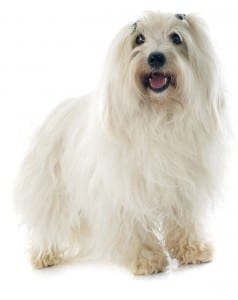 Many everyday things that look innocent and are perfectly safe for humans can be dangerous to pets. Easter lilies, for instance, can poison a cat just from the cat rubbing up against a vase, getting spores on the coat, and licking them off.
Many everyday things that look innocent and are perfectly safe for humans can be dangerous to pets. Easter lilies, for instance, can poison a cat just from the cat rubbing up against a vase, getting spores on the coat, and licking them off.
Here is a list with five categories that should be kept out of reach at all times.
5 Items Dangerous to Pets
Prescription medications
This includes anti-inflammatory medications, antidepressants, blood pressure medicines, antidepressants, and more. A safe course of action is to assume all medications are dangerous to pets unless specifically prescribed to the pet. This includes items you can buy at the grocery store, like Tylenol. If your pet needs a medication, check with your vet, or at least look the substances up on pet poison helpline.
Insecticides
Most people keep bug poisons, rat poison, ant traps, and similar out of reach for their pets, but also make sure to be careful with flea and tick products. Pay close attention to dosage and never apply a product intended for a dog on a cat. Dogs and cats are very different and their products have different compositions. A dosage appropriate for a dog can be dangerous to a cat, even if the pets are of the same weight.
Household products
This is a wide but important category. Laundry detergent, laundry pods, soap, fertilizer, lawn products, and other cleaning products should all be stored out of reach of pets and children. Be particularly careful with pods filled with detergent – they often look like toys or candy, and cause accidents with children, dogs, and cats every year.
People food
We eat many things that pets can taste, but other things are toxic to cats and dogs. Some items to never give a pet include chocolate, alcohol, xylitol, grapes, raisins, and macadamia nuts.
Plants
Many pets aren’t inclined to eat plants at all, but others are all too happy to munch down on greenery and things on the ground. This naturally goes for whatever they find in neighboring yards and along walks, and not just in your own yard. Examples of toxic plants include sago palms, bulbs of tulips, daffodils, and similar, azaleas, easter lilies, and rhododendrons.
What to do
If you think your pet has eaten something toxic, call your vet at once. The sooner your pet gets the appropriate treatment, the better.


 A nursing home is a place for a person who needs more care around the clock than can be reasonably given at home, but who doesn’t need to be in a hospital. Many nursing homes strive for a home-like environment. Some allow residents to bring their pets, but this isn’t always possible, and many nursing homes around the USA have opened their doors to therapy dogs who come visit on a regular basis. Therapy dogs in nursing homes has become a common sight across the country.
A nursing home is a place for a person who needs more care around the clock than can be reasonably given at home, but who doesn’t need to be in a hospital. Many nursing homes strive for a home-like environment. Some allow residents to bring their pets, but this isn’t always possible, and many nursing homes around the USA have opened their doors to therapy dogs who come visit on a regular basis. Therapy dogs in nursing homes has become a common sight across the country. At this time a year pet owners need to watch out for antifreeze spills. Antifreeze for cars is based on ethylene glycol, which is quite toxic and leads to many pet deaths every year. If a pet laps it up and isn’t treated immediately, severe damage to kidneys and nervous system will follow.
At this time a year pet owners need to watch out for antifreeze spills. Antifreeze for cars is based on ethylene glycol, which is quite toxic and leads to many pet deaths every year. If a pet laps it up and isn’t treated immediately, severe damage to kidneys and nervous system will follow.
 Many use the new year holiday to reflect on the year that has passed, and to look forward on what they want to change. Top new year’s resolutions for humans often include to exercise more, lose weight, and stop smoking. The new year can be a fresh start for your pets too.
Many use the new year holiday to reflect on the year that has passed, and to look forward on what they want to change. Top new year’s resolutions for humans often include to exercise more, lose weight, and stop smoking. The new year can be a fresh start for your pets too.  Holiday decorations are a big part of the season, and lights and cheerful colors spread joy in the winter darkness. Everything new in the house brings new dangers to pets as well, and here are some safety tips for pets on little things that can make a big difference.
Holiday decorations are a big part of the season, and lights and cheerful colors spread joy in the winter darkness. Everything new in the house brings new dangers to pets as well, and here are some safety tips for pets on little things that can make a big difference. This is a great season for family get-togethers, and everyone enjoys the Thanksgiving dinner table. Make sure the holiday flows smoothly and safely for the pets too with our handy tips.
This is a great season for family get-togethers, and everyone enjoys the Thanksgiving dinner table. Make sure the holiday flows smoothly and safely for the pets too with our handy tips.
 Halloween is just a week away, and while dogs may dress up and go trick or treating, we have to be cautious with what we feed them. Many children want to share, and this is a kind side that should be rewarded, but pets should not eat human candy – or decorations.
Halloween is just a week away, and while dogs may dress up and go trick or treating, we have to be cautious with what we feed them. Many children want to share, and this is a kind side that should be rewarded, but pets should not eat human candy – or decorations.